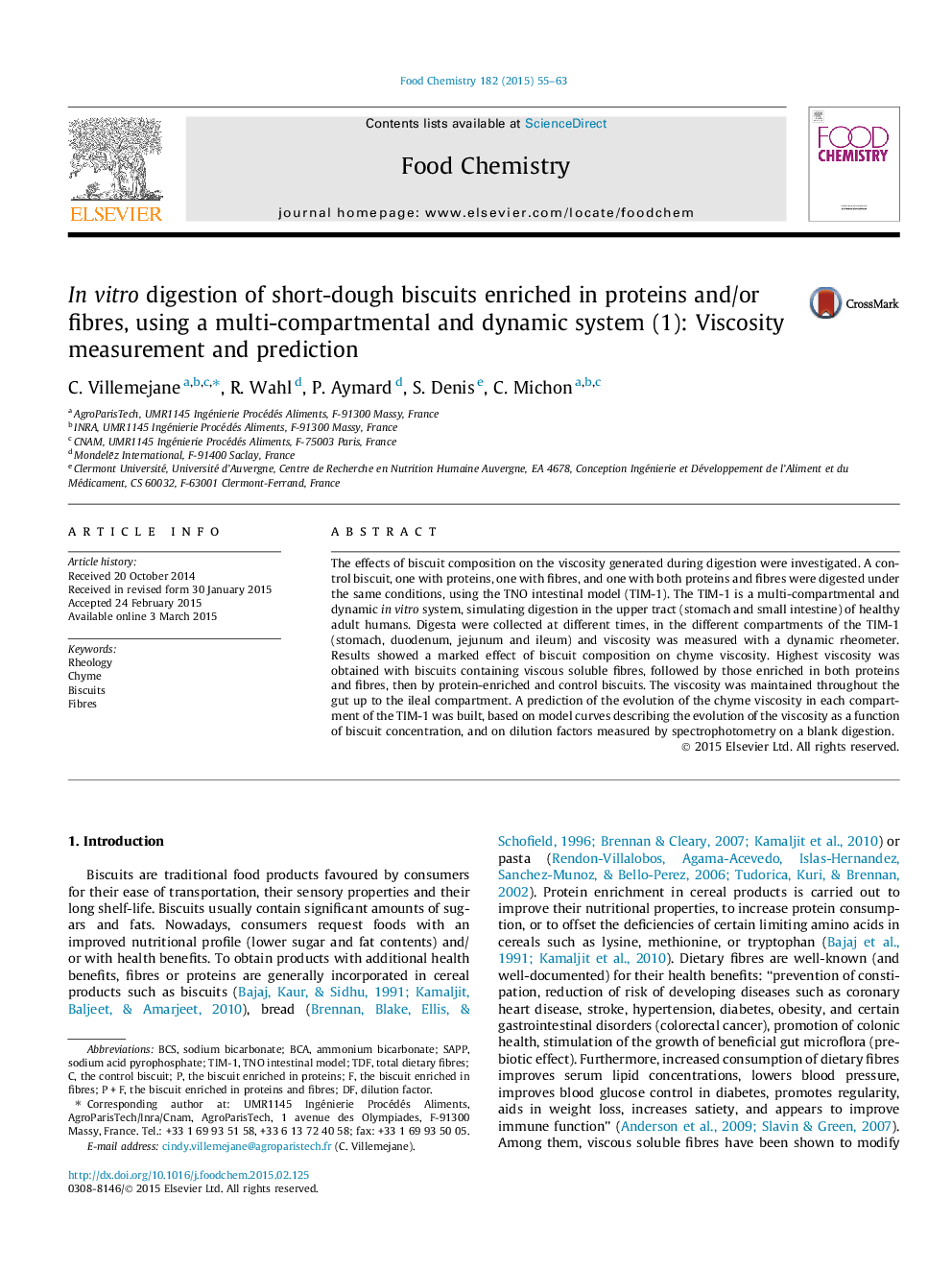| Article ID | Journal | Published Year | Pages | File Type |
|---|---|---|---|---|
| 7592021 | Food Chemistry | 2015 | 9 Pages |
Abstract
The effects of biscuit composition on the viscosity generated during digestion were investigated. A control biscuit, one with proteins, one with fibres, and one with both proteins and fibres were digested under the same conditions, using the TNO intestinal model (TIM-1). The TIM-1 is a multi-compartmental and dynamic in vitro system, simulating digestion in the upper tract (stomach and small intestine) of healthy adult humans. Digesta were collected at different times, in the different compartments of the TIM-1 (stomach, duodenum, jejunum and ileum) and viscosity was measured with a dynamic rheometer. Results showed a marked effect of biscuit composition on chyme viscosity. Highest viscosity was obtained with biscuits containing viscous soluble fibres, followed by those enriched in both proteins and fibres, then by protein-enriched and control biscuits. The viscosity was maintained throughout the gut up to the ileal compartment. A prediction of the evolution of the chyme viscosity in each compartment of the TIM-1 was built, based on model curves describing the evolution of the viscosity as a function of biscuit concentration, and on dilution factors measured by spectrophotometry on a blank digestion.
Keywords
Related Topics
Physical Sciences and Engineering
Chemistry
Analytical Chemistry
Authors
C. Villemejane, R. Wahl, P. Aymard, S. Denis, C. Michon,
